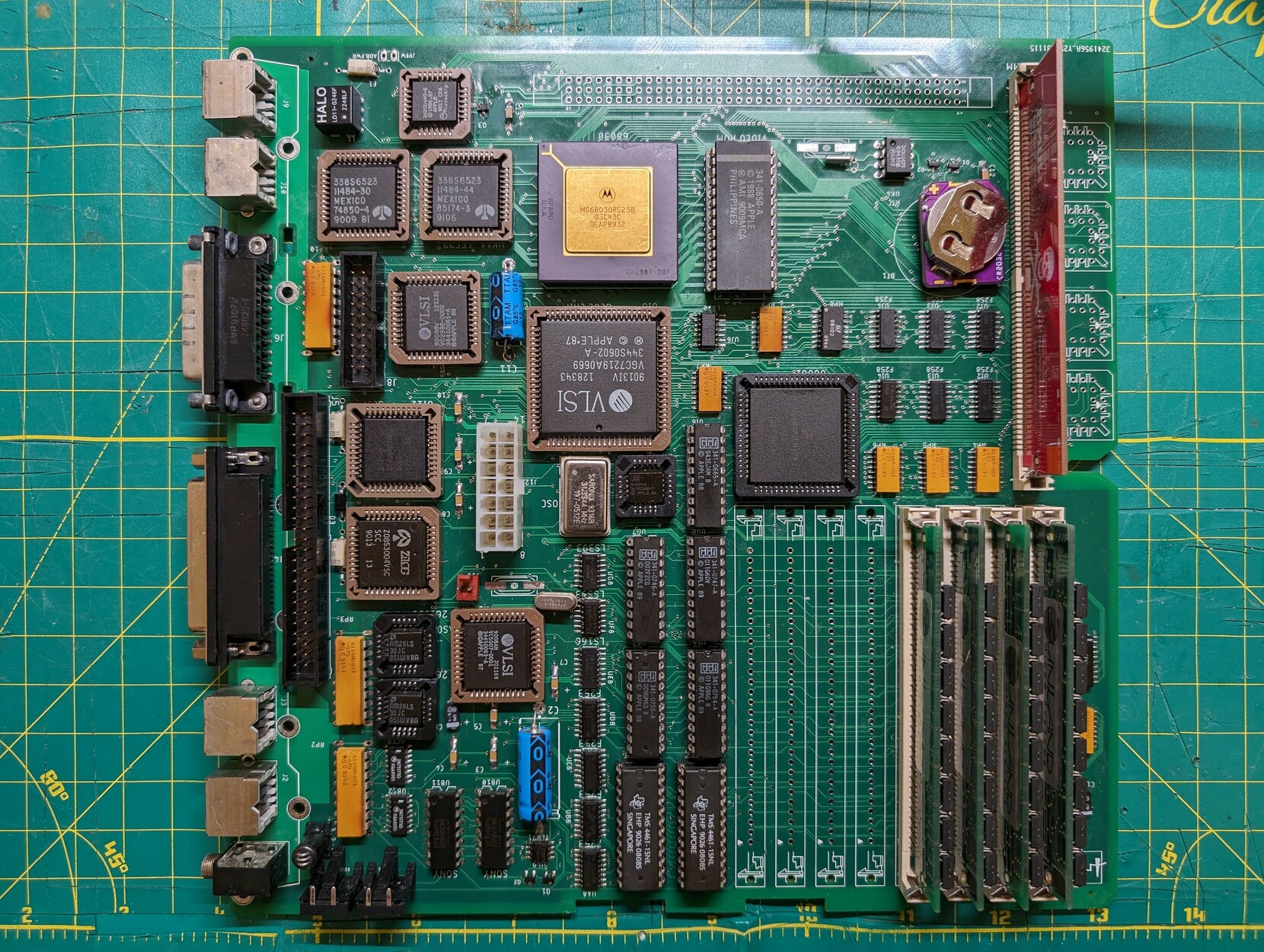mmjs
Member
Hi folks,
I will try to summarize this situation into a question, but I need to share some context first.
I own two original SE/30 boards. One was battery bombed, while the other was in great physical shape, but with a never identified issue which prevented it from successfully booting into any system. As part of troubleshooting, I replaced this board's F258 and F253 muxes, and the FPU. This replacement didn't fix my issue, but it correlated with me starting to experience bizarre issues with the 32Mhz clock which have now plagued me for months, across multiple logic boards, analog boards and power supplies. The issue effectively results in the clock signal coming off of UH7 fluctuating in voltage, and affecting other components as well. It *feels* like a short. But I've been unable to figure it out. This is how this issue manifests itself on the screen:
https://mastodon.vladovince.com/sys...254/748/083/086/original/245efedad420c7d9.mp4
Here is anothe example:
https://mastodon.vladovince.com/sys...292/603/195/174/original/d9b5914a07146ae8.mp4
This is what this looks like on the scope of the 32Mhz clock off of UH7. Eventually it stops moving and goes low. At that point the image would fully collapse too.
https://mastodon.vladovince.com/sys...690/839/802/565/original/b4b20ebb735b45a5.mp4
I've been referring to it as "collapsing video", but I've collected at least a dozen of instances of failure -- most often I can't get any chime, but I'll get the stripes for 5-10 minutes until it collapses. Other times I might get bad or even good chime, then stripes. I have gotten more interesting simasimac patterns:
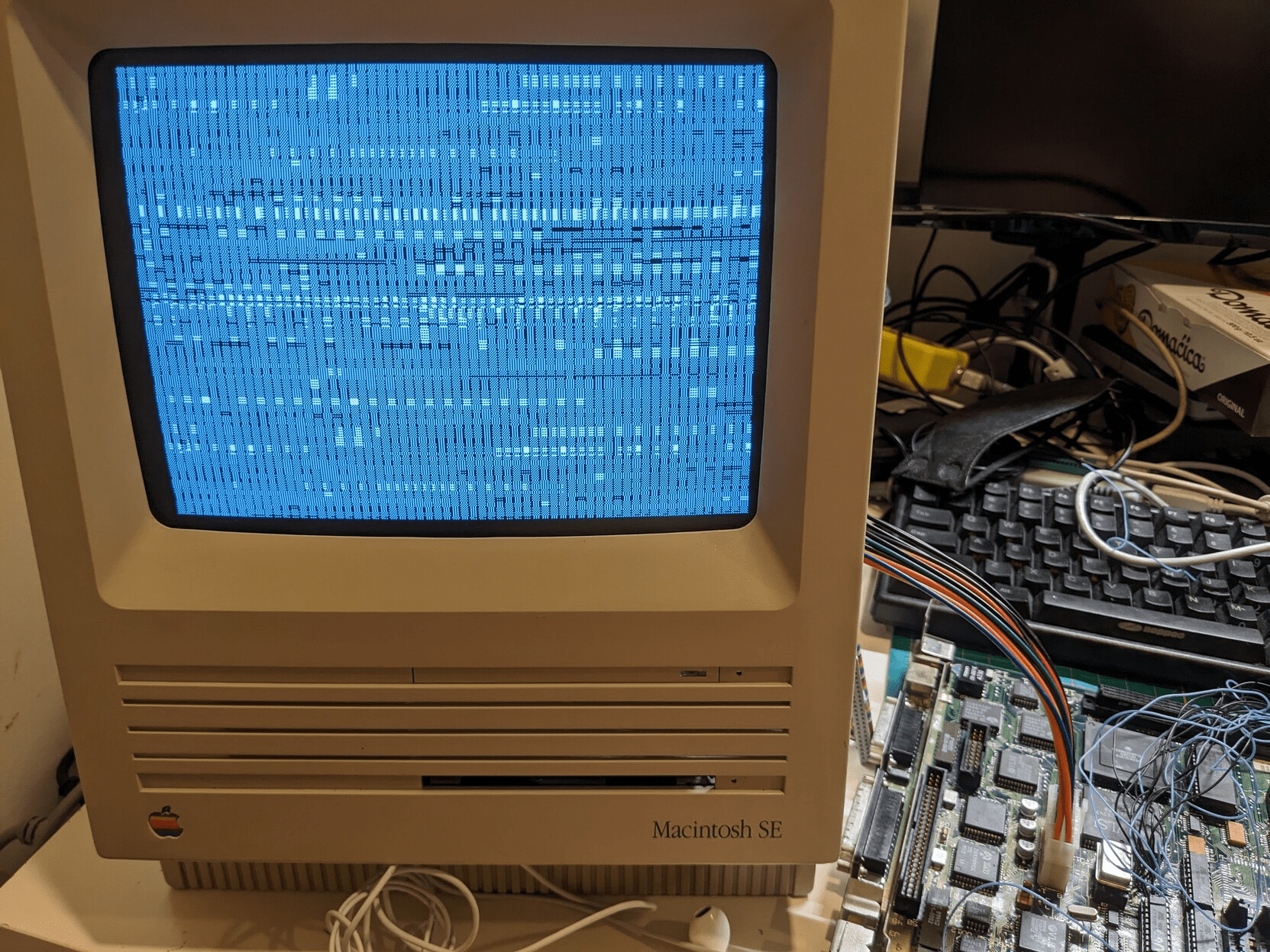
Regardless, it always results in the clock falling apart.
Here's where things get weird. This issue has now followed me across 4 different boards.
Board 1: "good" board that wouldn't fully boot -- first started exhibiting symptom
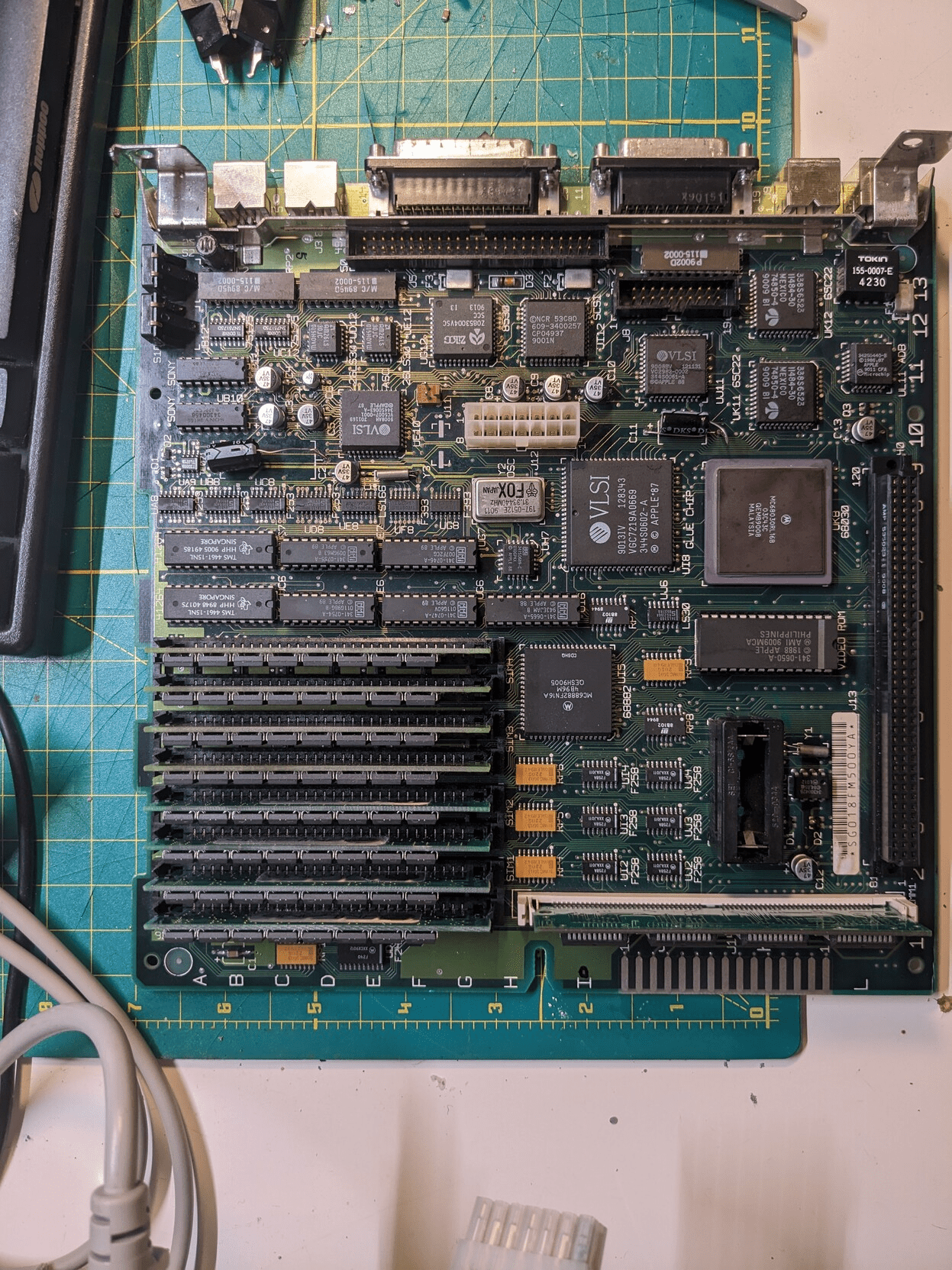
Board 2: battery bombed board, it could get stripes but nothing more. After I switched out its clock and UH7 with the "good" board, the problem started happening on this board as well
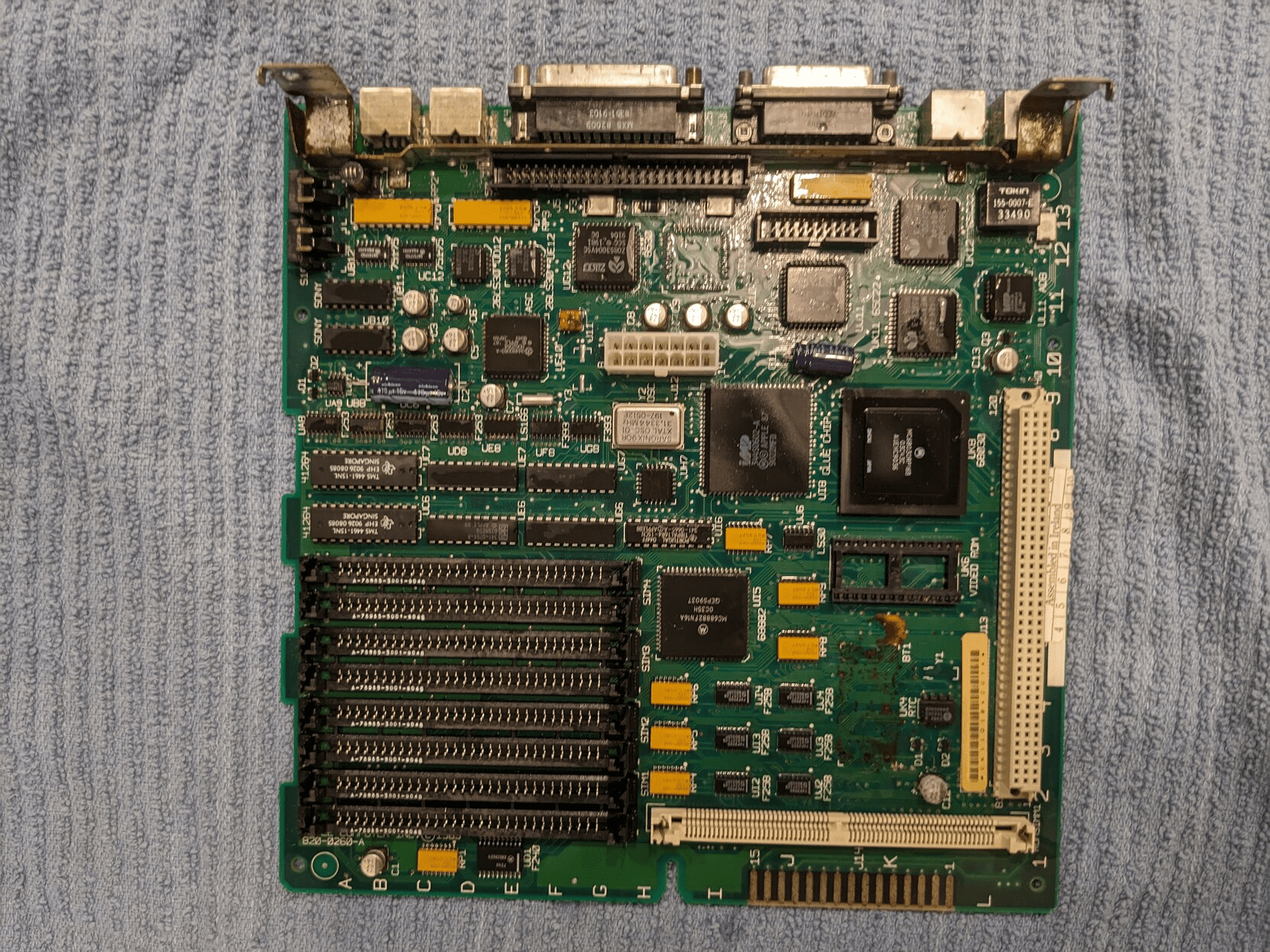
Board 3: Bolle board #1 - I tried to build a new board using the battery bombed's components. The same issue happened
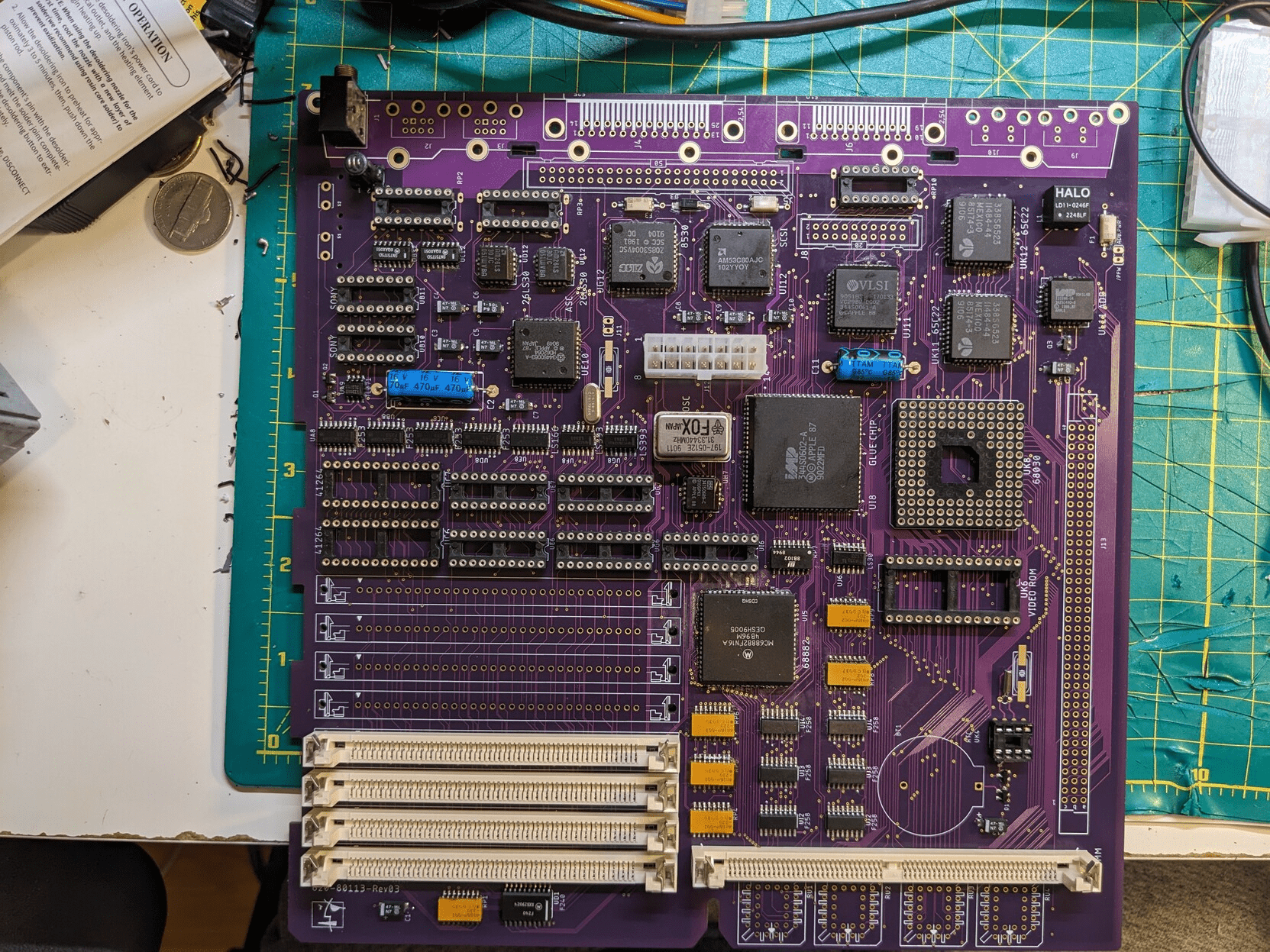
Board 4: Bolle board #2 - frustrated with this issue, I got extra boards to experiment on. I tried to build a minimum viable circuit to test with, with all new components. This exactly same thing happens as soon as any other chips are installed other than UH7 and the Glue chip:
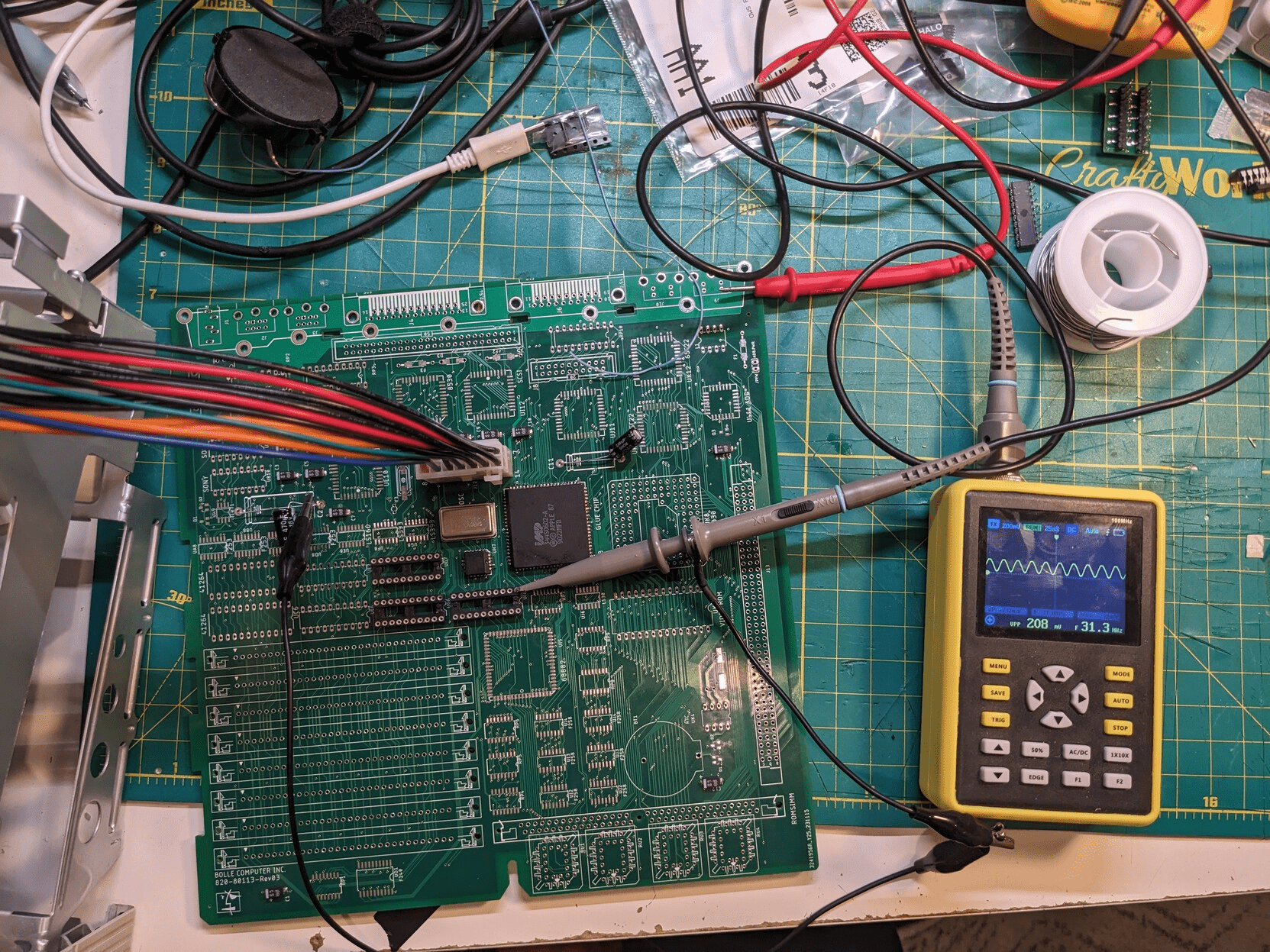
Very early on I suspected the analog board and power supply. I have two SE compatible chasis:
1. SE/30 analog board and PSU that came with the battery bombed board. In good shape, I recapped the analog board
2. SE analog board which I recapped a few years ago
Same issues happen in exactly the same way with both of these analog boards/PSUs.
My SE board work perfectly fine in both of these chasis.
At this point I am at a complete loss. The fact that I can replicate this on a brand new board, with all new components baffles me. I am grasping at straws, but I am presumably making a mistake here, somewhere, and perhaps I'm making the same mistake over and over again, or I'm ignoring something that should be obvious.
Any ideas are very welcome. I've been documenting this saga in a lot of detail over at Mastodon: https://mastodon.vladovince.com/@mejs/111008723163117281
And finally for the 2 concrete questions. S
- Should it be possible to incrementally test this like I've been doing with board #4? I've been building it one component at a time, until I run into the issue (I run into it very quickly). Does my plan with the mostly empty board make sense?
- How do the SE and SE/30 compare in terms of what state of PSU/analog board they need? Is it theoretically possible that my analog boards/PSUs have issues, but the SE which boots fine with both is more resilient?
Thanks everyone!
I will try to summarize this situation into a question, but I need to share some context first.
I own two original SE/30 boards. One was battery bombed, while the other was in great physical shape, but with a never identified issue which prevented it from successfully booting into any system. As part of troubleshooting, I replaced this board's F258 and F253 muxes, and the FPU. This replacement didn't fix my issue, but it correlated with me starting to experience bizarre issues with the 32Mhz clock which have now plagued me for months, across multiple logic boards, analog boards and power supplies. The issue effectively results in the clock signal coming off of UH7 fluctuating in voltage, and affecting other components as well. It *feels* like a short. But I've been unable to figure it out. This is how this issue manifests itself on the screen:
https://mastodon.vladovince.com/sys...254/748/083/086/original/245efedad420c7d9.mp4
Here is anothe example:
https://mastodon.vladovince.com/sys...292/603/195/174/original/d9b5914a07146ae8.mp4
This is what this looks like on the scope of the 32Mhz clock off of UH7. Eventually it stops moving and goes low. At that point the image would fully collapse too.
https://mastodon.vladovince.com/sys...690/839/802/565/original/b4b20ebb735b45a5.mp4
I've been referring to it as "collapsing video", but I've collected at least a dozen of instances of failure -- most often I can't get any chime, but I'll get the stripes for 5-10 minutes until it collapses. Other times I might get bad or even good chime, then stripes. I have gotten more interesting simasimac patterns:
Regardless, it always results in the clock falling apart.
Here's where things get weird. This issue has now followed me across 4 different boards.
Board 1: "good" board that wouldn't fully boot -- first started exhibiting symptom
Board 2: battery bombed board, it could get stripes but nothing more. After I switched out its clock and UH7 with the "good" board, the problem started happening on this board as well
Board 3: Bolle board #1 - I tried to build a new board using the battery bombed's components. The same issue happened
Board 4: Bolle board #2 - frustrated with this issue, I got extra boards to experiment on. I tried to build a minimum viable circuit to test with, with all new components. This exactly same thing happens as soon as any other chips are installed other than UH7 and the Glue chip:
Very early on I suspected the analog board and power supply. I have two SE compatible chasis:
1. SE/30 analog board and PSU that came with the battery bombed board. In good shape, I recapped the analog board
2. SE analog board which I recapped a few years ago
Same issues happen in exactly the same way with both of these analog boards/PSUs.
My SE board work perfectly fine in both of these chasis.
At this point I am at a complete loss. The fact that I can replicate this on a brand new board, with all new components baffles me. I am grasping at straws, but I am presumably making a mistake here, somewhere, and perhaps I'm making the same mistake over and over again, or I'm ignoring something that should be obvious.
Any ideas are very welcome. I've been documenting this saga in a lot of detail over at Mastodon: https://mastodon.vladovince.com/@mejs/111008723163117281
And finally for the 2 concrete questions. S
- Should it be possible to incrementally test this like I've been doing with board #4? I've been building it one component at a time, until I run into the issue (I run into it very quickly). Does my plan with the mostly empty board make sense?
- How do the SE and SE/30 compare in terms of what state of PSU/analog board they need? Is it theoretically possible that my analog boards/PSUs have issues, but the SE which boots fine with both is more resilient?
Thanks everyone!


